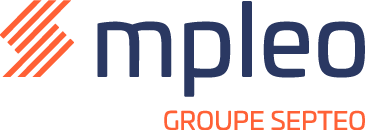With the HR function undergoing rapid transformation, companies must equip themselves with tools capable of addressing their new strategic challenges. Developing human capital, increasing employee engagement, and optimizing skills are now priorities—far beyond just administrative management. In this context, multiple HR solutions exist: HRIS, HCM, HRMS… Acronyms that often seem confusing but represent very different realities.
This article helps you better understand the differences so you can make an informed choice aligned with your HR objectives.
HRIS: The Go-To Tool for Administrative Management
The Human Resources Information System (HRIS) was historically the first tool to digitize HR processes. Designed primarily to automate administrative tasks and centralize employee data, it fulfills the basic operational needs of HR departments.
Key Functions of an HRIS:
- Employee data management (HR files, contracts, hiring, etc.)
- Payroll and benefits
- Time, attendance, and leave management
- Recruitment and training tracking
- Operational HR reporting (absenteeism, turnover…)
HRIS tools remain widely used in companies today, including in Belgium, especially for their ability to automate and streamline processes.
HCM: A Talent-Focused Approach
Human Capital Management (HCM) goes beyond administrative management by offering a true strategy centered on the value of human capital. HCM views employees not as mere resources but as key drivers of performance.
HCM software includes advanced modules focused on skills management, engagement, performance, and continuous learning.
What HCM Software Enables:
- Monitoring individual and team performance
- Personalized career planning
- Internal mobility and skills management
- Tailored training programs
It’s a strategic tool for companies aiming to align HR with business growth.
HRMS: The Intelligent Twin of HCM
The Human Resource Management System (HRMS) encompasses all the features of an SIRH and HCM, while adding a technological layer. Where HCM defines a human capital strategy, HRMS operationalizes it through advanced, data-driven tools.
HRMS leverages HR analytics and artificial intelligence to enhance decision-making and anticipate workforce needs.
What HRMS Software Enables:
- Workforce forecasting through data analysis
- AI-based training and mobility recommendations
- Matching skills with job roles
- Identifying potential attrition risks
- Predictive dashboards
Conclusion
Choosing the right HR tool isn’t just about features—it’s about alignment with your overall strategy. HRIS is still a valuable asset for automating routine tasks. HCM provides a more human and engaging vision of HR. Meanwhile, HRMS takes things a step further by harnessing the power of data and intelligent technologies.
Looking to assess which solution best fits your organization? Our experts are here to support you in your selection process.

